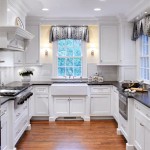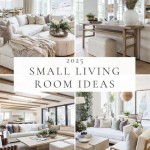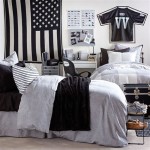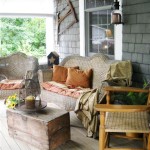DIY Home Decor: Achieving a Luxurious Look on a Budget
Elevating a home's aesthetic often involves significant financial investment. However, achieving a sophisticated and expensive-looking interior is possible through strategic do-it-yourself (DIY) projects. By focusing on specific elements and employing readily available materials, homeowners can transform their living spaces without breaking the bank.
Strategic Paint Choices and Application Techniques
Paint is a foundational element in interior design, and utilizing it strategically can drastically enhance the perceived value of a space. Opting for specific types of paint and employing professional-grade application techniques can significantly impact the final result.
Neutral color palettes, such as soft greys, off-whites, and muted beiges, generally project an aura of sophistication and elegance. These colors provide a versatile backdrop for furniture and accessories, allowing them to stand out and contribute to a cohesive and refined aesthetic. Darker, more saturated colors, such as charcoal grey, navy blue, or deep emerald green, can also create a luxurious ambiance, particularly in smaller spaces or as accent walls. When selecting a paint color, it is crucial to consider the existing lighting conditions and the overall style of the room.
Beyond color selection, the sheen of the paint plays a vital role in the final appearance. Matte finishes offer a smooth, non-reflective surface that can conceal imperfections and create a sense of depth. Eggshell finishes provide a slightly more durable and washable surface while maintaining a subtle sheen. For areas prone to moisture or heavy use, such as kitchens and bathrooms, semi-gloss or gloss finishes are recommended. However, it is important to note that higher gloss levels can accentuate imperfections, so proper surface preparation is essential.
Preparation is paramount when applying paint. This includes thoroughly cleaning the walls, filling any holes or cracks, and sanding the surface to create a smooth and even base. Priming the walls is also crucial, as it helps to ensure proper paint adhesion and coverage, resulting in a more professional and long-lasting finish. Investing in high-quality paint brushes and rollers is also essential, as they will provide better coverage and a smoother application. Multiple thin coats are preferable to a single thick coat, as they minimize drips and ensure even color distribution.
Consider incorporating paint techniques to add visual interest and depth. Faux finishes, such as sponge painting or rag rolling, can create a textured look reminiscent of more expensive materials like Venetian plaster. Using painter's tape to create geometric patterns or stripes can also add a modern and sophisticated touch. Applying a clear glaze over a base coat can create a subtle sheen and protect the painted surface.
Upcycled Furniture and Refurbished Finds
Transforming existing furniture and sourcing unique pieces from thrift stores or online marketplaces can significantly reduce decorating costs while adding character and personality to a home. The key is to identify pieces with good bones and potential, even if they require some restoration or customization.
Upholstery is a powerful tool for transforming the look of a sofa, armchair, or dining chairs. Learning basic upholstery techniques or hiring a professional upholsterer can breathe new life into dated or worn-out furniture. Choosing high-quality fabrics, such as linen, velvet, or leather, can instantly elevate the perceived value of the piece. Consider adding details like piping, tufting, or nailhead trim for a more custom and luxurious look.
Refinishing wood furniture can dramatically change its appearance and make it look brand new. Sanding down the existing finish and applying a new stain or paint can transform a dated piece into a modern and stylish addition to the room. Consider using high-quality wood stains or paints that mimic the look of more expensive woods, such as mahogany or walnut. Adding new hardware, such as knobs, pulls, or handles, can also significantly enhance the overall look of the piece.
Thrift stores, flea markets, and online marketplaces offer a wealth of unique and interesting furniture and decor items at discounted prices. With a little creativity and effort, these items can be transformed into stylish and expensive-looking pieces. For example, an old wooden frame can be painted and used to create a decorative mirror or artwork. A vintage suitcase can be repurposed as a side table or storage container. A set of mismatched china can be combined to create a unique and eclectic tablescape.
When selecting items to upcycle or refurbish, it is important to consider the overall style of the room and choose pieces that complement the existing decor. It is also important to inspect the items carefully for any damage or defects that may require repair. With a little imagination and elbow grease, upcycled furniture and refurbished finds can add character, personality, and a touch of luxury to a home on a budget.
Elevated Textile Choices and Layering
Textiles play a crucial role in creating a comfortable and visually appealing living space. Strategic selection and layering of fabrics can significantly elevate the perceived quality and sophistication of a room.
Investing in high-quality fabrics for curtains, cushions, and throws is a worthwhile investment. Natural fibers like linen, cotton, silk, and wool tend to look and feel more luxurious than synthetic alternatives. These materials drape beautifully, resist wrinkles, and offer a superior tactile experience. When selecting fabrics, consider the weight and texture. Heavier fabrics, such as velvet or brocade, can add a sense of opulence, while lighter fabrics, such as linen or voile, create a more airy and relaxed atmosphere.
Layering textiles adds depth and visual interest to a room. Start with a solid foundation, such as a neutral-colored rug or sofa, and then add layers of patterned or textured cushions and throws. Mixing different textures, such as velvet, linen, and fur, can create a more dynamic and interesting look. Consider adding a statement rug with a bold pattern or color to anchor the room and add a touch of personality.
Window treatments can significantly impact the overall aesthetic of a room. Investing in high-quality curtains or blinds can instantly elevate the look and feel of the space. Consider using floor-to-ceiling curtains to create a sense of height and drama. Adding a decorative curtain rod and finials can also enhance the overall look of the window treatments. Layering sheer curtains with heavier drapes can provide both privacy and light control.
Pay attention to the details when selecting and arranging textiles. Ensure that cushions are properly filled and arranged symmetrically or asymmetrically, depending on the desired look. Consider adding decorative trims, such as tassels, fringes, or piping, to cushions and throws for a more custom and luxurious look. Steam or iron textiles to remove wrinkles and ensure that they look their best.
Impactful Lighting Fixtures and Placement
Lighting is an integral component of interior design, impacting mood, functionality, and the perceived value of a space. Thoughtful selection and strategic placement of lighting fixtures can dramatically transform a room’s ambiance.
Replacing outdated or generic lighting fixtures with more stylish and contemporary options is a relatively inexpensive way to upgrade a room's aesthetic. Consider replacing basic builders-grade fixtures with chandeliers, pendant lights, sconces, or track lighting systems. Look for fixtures with interesting designs, high-quality materials, and finishes that complement the overall style of the room. Brass, bronze, and matte black finishes tend to project a more sophisticated look than chrome or polished nickel.
Layering different types of lighting is crucial for creating a well-lit and inviting space. Ambient lighting provides overall illumination, task lighting provides focused light for specific activities, and accent lighting highlights architectural features or decorative elements. Combine overhead lighting with table lamps, floor lamps, and wall sconces to create a balanced and versatile lighting scheme. Dimmers allow for adjusting the intensity of the light to create different moods and atmospheres.
Strategic placement of lighting fixtures can enhance the architectural features of a room and create a more visually appealing space. Use uplighting to highlight textured walls or architectural details. Position table lamps strategically to create pools of light and add warmth to the room. Consider using recessed lighting to create a clean and modern look. Hang pendant lights over kitchen islands or dining tables to create a focal point.
Pay attention to the type of light bulbs used in each fixture. LED bulbs are energy-efficient and long-lasting, and they come in a variety of color temperatures. Warm white light bulbs (2700-3000K) create a cozy and inviting atmosphere, while cool white light bulbs (3500-4100K) provide a brighter and more energizing light. Choose the appropriate color temperature based on the function of the room and the desired mood. Edison bulbs can add a vintage touch to a room, while globe bulbs provide a soft and diffused light.
Judicious Use of Mirrors and Reflective Surfaces
Mirrors and reflective surfaces can significantly enhance the perceived size and brightness of a room, creating a more luxurious and inviting atmosphere. Strategic placement and careful selection of mirrors can transform a space without significant cost.
Large mirrors can create the illusion of extra space, particularly in small or cramped rooms. Placing a large mirror on a wall opposite a window can reflect natural light and make the room feel brighter and more open. Consider using a full-length mirror in a bedroom or hallway to create the illusion of a larger space. Grouping smaller mirrors together can also create a visually interesting focal point.
Mirrored furniture can add a touch of glamour and sophistication to a room. Consider using a mirrored coffee table, console table, or bedside table to reflect light and create a sense of opulence. Mirrored trays can be used to display decorative items and add a touch of sparkle to a room. Mirrored tiles can be used to create a visually striking backsplash in a kitchen or bathroom.
Reflective surfaces, such as metallic accents, glass vases, and polished surfaces, can also enhance the perceived brightness and sophistication of a room. Consider using metallic picture frames, candle holders, or decorative objects to add a touch of glamour. Glass vases can reflect light and create a sense of airiness. Polished surfaces, such as stone countertops or hardwood floors, can enhance the overall look and feel of the room.
When placing mirrors and reflective surfaces, consider the surrounding decor and lighting. Avoid placing mirrors in areas where they will reflect cluttered spaces or unflattering light. Ensure that the mirrors are properly cleaned and maintained to prevent streaks and smudges. Adjust the placement of lighting fixtures to maximize the reflective properties of the mirrors and surfaces.

5 Affordable Decor Diy S That Look Expensive Pine And Prospect Home
:strip_icc()/cdn.cliqueinc.com__cache__posts__81867__undefined-81867-1536620650347-image.700x0c-4ded8a03d11f4035ba3ee9cba94ddcff.jpg?strip=all)
23 Ways To Make Your Home Look More Expensive

How To Make Your Home Look Expensive On A Budget The Diy Mommy

How To Make Your Home Look More Expensive Diy Furniture Flip Decor Tips

100 Decor Ideas That Look Expensive Family Handyman
How To Make Home Look Expensive For According Designers

20 Diy Projects To Make Your Home Look Expensive
:strip_icc()/cdn.cliqueinc.com__cache__posts__81867__undefined-81867-1536179216780-image.700x0c-886b648eebf540e095948909c181f154.jpg?strip=all)
23 Ways To Make Your Home Look More Expensive

How To Make Your House Look Expensive 10 Sneaky Living Room Tricks

15 Unbelievably Profitable Diy Projects To Make Your Home Look Expensive Arts And Classy
Related Posts







